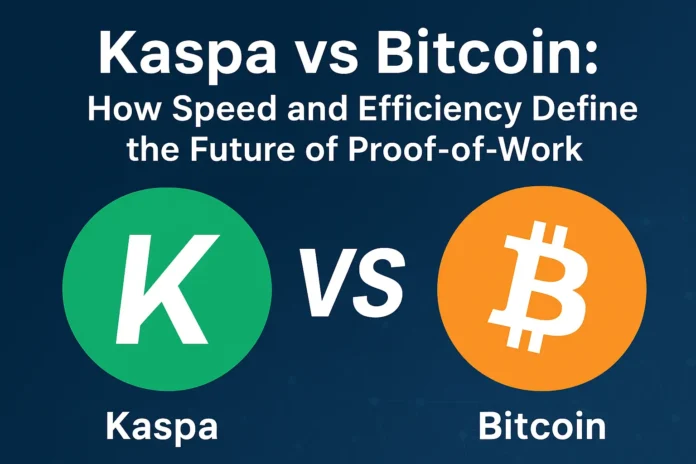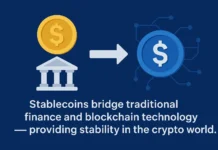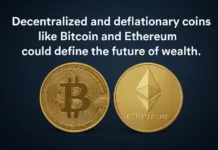Bitcoin remains the most recognized cryptocurrency, but newer technologies, such as Kaspa, are redefining what’s possible in blockchain. Kaspa achieves near-instant throughput at about 10 blocks each second, significantly outpacing Bitcoin’s much slower block rate. This speed advantage has sparked debate about whether Kaspa represents the future of Proof-of-Work (PoW) consensus mechanisms.
Why Kaspa Stands Out
Instead of relying on a single linear chain like Bitcoin, Kaspa runs on a Directed Acyclic Graph (DAG) framework. It means:
- Multiple blocks can be confirmed simultaneously.
- Transactions clear faster without sacrificing decentralization.
- It maintains the security of Proof-of-Work while improving scalability.
Kaspa prioritizes accessibility and community involvement rather than heavy reliance on mining farms.
| Feature | Kaspa | Bitcoin |
|---|---|---|
| Launch Year | 2021 | 2009 |
| Block Speed | 10 blocks per second | 1 block per 10 minutes |
| Consensus Mechanism | Proof-of-Work (BlockDAG) | Proof-of-Work (Blockchain) |
| Transactions Per Second | Higher throughput | ~7 transactions per second |
| Scalability | Designed for massive growth | Limited without Layer 2 |
| Energy Efficiency | More efficient due to DAG structure | High consumption |
| Community | Growing, open-source | Global, well-established |
Official sites: Kaspa.org | Bitcoin.org
How Kaspa Could Complement Bitcoin
Kaspa is not necessarily a “Bitcoin killer.” Instead, it can coexist in the crypto ecosystem:
- Bitcoin → Store of value, digital gold.
- Kaspa → High-speed settlement and scalable Proof-of-Work network.
Kaspa serves as a laboratory for blockchain scalability in the eyes of experts, even as Bitcoin holds its position as the world’s financial standard.
Real-World Applications of Kaspa
- Faster Payments – Transactions confirm almost instantly.
- Developer-Friendly – Open-source code encourages experimentation.
- Fair Mining – More decentralized compared to coins dominated by industrial mining.
- Scalable Infrastructure – Future-proofed for higher demand without costly forks.
These features make Kaspa attractive for those who value both decentralization and speed.
Challenges Ahead
Despite its advantages, Kaspa faces hurdles:
- Adoption → Kaspa is still in its early stages and has not reached Bitcoin’s global recognition.
- Competition → Other scalable blockchains like Solana and Ethereum are also improving.
- Market Volatility → Like all crypto, Kaspa remains speculative.
Frequently Asked Questions (FAQs)
Is Kaspa faster than Bitcoin?
Yes. Kaspa processes 10 blocks per second, while Bitcoin averages one block every 10 minutes.
Is Kaspa more energy-efficient than Bitcoin?
Kaspa’s BlockDAG enables more efficient block confirmations, but it still relies on Proof-of-Work, resulting in ongoing energy demand.
Can Kaspa replace Bitcoin?
Unlikely in the near future. Bitcoin’s global recognition and adoption as a store of value remain unmatched. Kaspa is most useful as a complement that provides speed and scalability.
Is Kaspa a good investment?
This article is intended for educational purposes only and should not be considered professional investing or financial advice. Always research before investing in any cryptocurrency.
Where can I learn more about Kaspa?
Visit the official site at Kaspa.org.
Conclusion
Kaspa’s BlockDAG technology showcases the next step in Proof-of-Work evolution, offering faster transactions and scalability while maintaining decentralization. Bitcoin holds its place as the world’s digital gold, while Kaspa carves out a unique role as a high-speed settlement layer.
- Kaspa and the BlockDAG Revolution: Why Speed Matters in Blockchain
- The 5 Fastest Decentralized Cryptocurrencies in the World
- Kaspa’s 10 Blocks Per Second: The Fastest Proof-of-Work Blockchain in History















